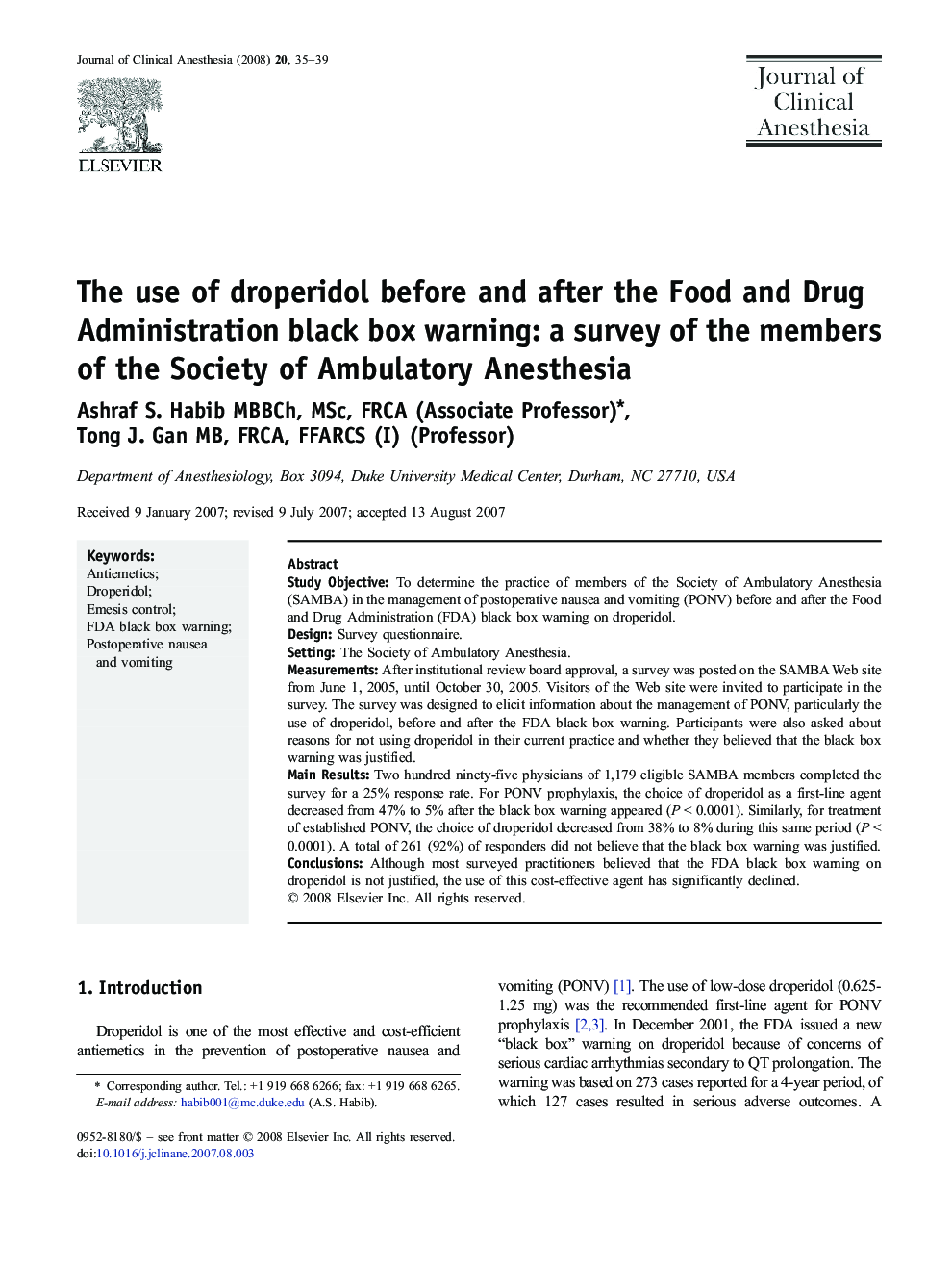| Article ID | Journal | Published Year | Pages | File Type |
|---|---|---|---|---|
| 2763631 | Journal of Clinical Anesthesia | 2008 | 5 Pages |
Study ObjectiveTo determine the practice of members of the Society of Ambulatory Anesthesia (SAMBA) in the management of postoperative nausea and vomiting (PONV) before and after the Food and Drug Administration (FDA) black box warning on droperidol.DesignSurvey questionnaire.SettingThe Society of Ambulatory Anesthesia.MeasurementsAfter institutional review board approval, a survey was posted on the SAMBA Web site from June 1, 2005, until October 30, 2005. Visitors of the Web site were invited to participate in the survey. The survey was designed to elicit information about the management of PONV, particularly the use of droperidol, before and after the FDA black box warning. Participants were also asked about reasons for not using droperidol in their current practice and whether they believed that the black box warning was justified.Main ResultsTwo hundred ninety-five physicians of 1,179 eligible SAMBA members completed the survey for a 25% response rate. For PONV prophylaxis, the choice of droperidol as a first-line agent decreased from 47% to 5% after the black box warning appeared (P < 0.0001). Similarly, for treatment of established PONV, the choice of droperidol decreased from 38% to 8% during this same period (P < 0.0001). A total of 261 (92%) of responders did not believe that the black box warning was justified.ConclusionsAlthough most surveyed practitioners believed that the FDA black box warning on droperidol is not justified, the use of this cost-effective agent has significantly declined.
